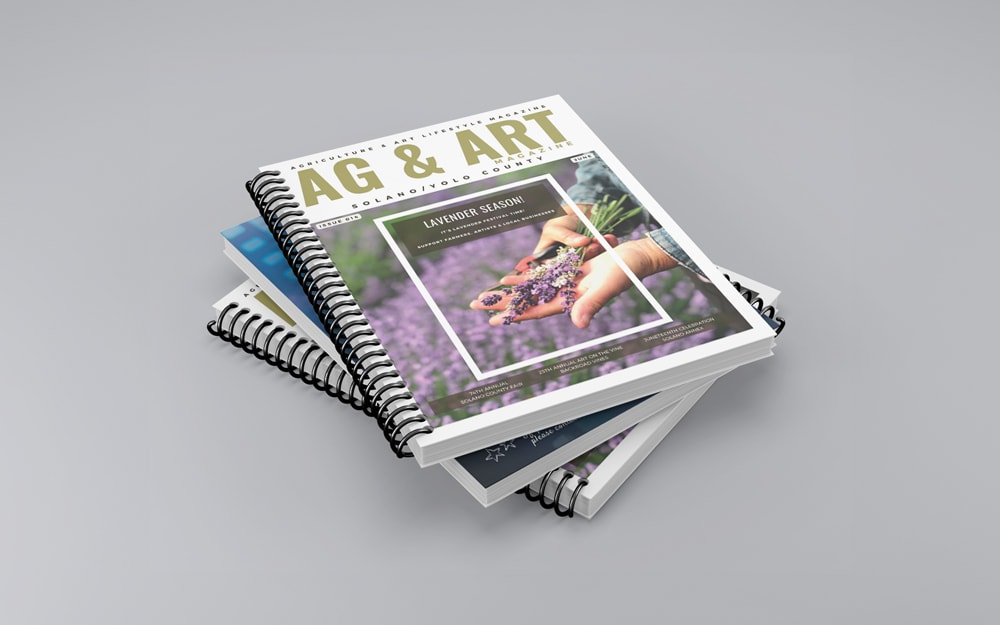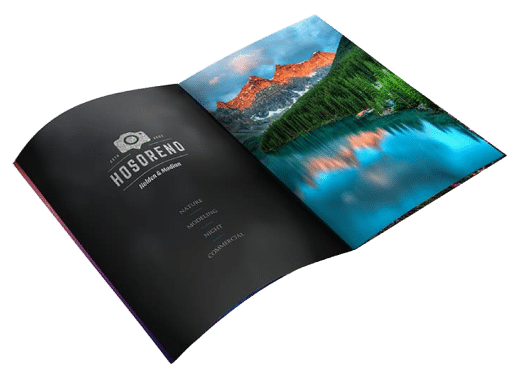How Booklet Printing Supports Omni-Channel Marketing Strategies
How Booklet Printing Supports Omni-Channel Marketing Strategies
Blog Article
The Important Overview to Recognizing Brochure Printing Options and Techniques
The process of brochure printing involves multiple factors to consider that can greatly influence the last item. From selecting the appropriate format and size to recognizing the nuances of binding approaches, each option plays an important duty. Additionally, variables such as paper stock and printing strategies further influence the efficiency of the booklet. As one browses these options, it comes to be imperative to realize how they adjoin and what that implies for the overall end result.
Recognizing Booklet Styles and Dimensions
When taking into consideration pamphlet printing, understanding the various layouts and sizes readily available is essential for achieving the wanted presentation. Booklets can be generated in many styles, including saddle-stitched, spiral-bound, and perfect-bound, each offering distinctive advantages. Typical dimensions range from standard letter (8.5 x 11 inches) to smaller alternatives like A5 (5.8 x 8.3 inches), enabling adaptability based on material and target audience.Selecting the ideal size can influence both the layout and viewers engagement. Larger dimensions might suit aesthetically driven content, while smaller sized styles may be much more mobile and straightforward. In addition, the variety of web pages impacts the option of binding method, as thicker booklets may require tougher bindings. Eventually, recognizing these elements permits an extra tailored technique, making certain that the end product aligns with the desired message and aesthetic, enhancing the overall performance of the communication.
Selecting the Right Paper Stock

Binding Techniques: Factors To Consider and alternatives
When it involves binding techniques for booklets, numerous options are available, each with distinct benefits. Saddle stitch binding offers a cost-effective service for thinner brochures, while ideal binding methods give an even more refined search for thicker magazines. Wire-O binding stands out for its longevity and ease of usage, making it optimal for documents that require flexibility.
Saddle Stitch Binding
Saddle stitch binding uses a functional and cost-efficient option for assembling brochures, making it a popular option amongst businesses and authors. This binding method involves folding sheets of paper in half and stapling them along the fold line, developing a well organized and neat appearance. Commonly suitable for brochures with a reduced web page count, saddle sewing is excellent for magazines, brochures, and instructional products. The simplicity of this technique enables for quick manufacturing and is often favored for marketing items or short runs. Nevertheless, it is important to keep in mind that saddle stitch binding may not be suitable for thicker booklets, as the back might not stand up under increased weight. Generally, it remains a trustworthy choice for many printing projects.
Perfect Binding Strategies
Perfect binding is a commonly utilized technique that gives a specialist and polished surface to brochures and magazines. This method involves gluing the pages with each other at the spinal column making use of a solid adhesive, enabling a clean side and the ability to hold a bigger variety of web pages compared to saddle stitching. Perfect binding is especially suitable for thicker brochures, such as magazines and annual reports, where a strong, flat spine is desired. Furthermore, it uses the choice for a printed cover that can be designed to improve aesthetic charm. Considerations such as page count, paper weight, and the intended usage of the booklet need to be taken into account, as they can impact sturdiness and overall high quality.
Wire-O Binding Options
Wire-O binding, recognized for its resilience and versatility, supplies an exceptional choice for booklets that require very easy page turning and an expert appearance. This binding technique uses a series of steel loops that hold pages securely, enabling them to exist level when open. It is particularly appropriate for directories, discussions, and manuals due to its robust nature. Wire-O binding is available in different shades and diameters, fitting various page matters and thicknesses. In addition, it allows the inclusion of covers and tabs, boosting the booklet's total visual. Factors to consider for Wire-O binding consist of the option of wire color, the dimension of the loops, and the degree of modification desired, every one of which can profoundly affect the end product's appearance and performance.
Digital vs. Offset Printing: Which Is Best for You?
When choosing a printing approach for brochures, comprehending the differences between digital and counter printing is crucial. Digital printing makes use of contemporary innovation to generate top quality prints quickly and cost effectively, making it excellent for brief runs or projects needing fast turn-around times. It allows for modification, offering the capacity to print on-demand with marginal waste.In contrast, offset printing is a conventional method that masters creating huge quantities with constant quality. It involves transferring ink from a plate to a rubber blanket, after that to the paper, which results in vivid shades and exact information. Nonetheless, counter printing typically requires longer arrangement times and is extra affordable for larger volumes.Ultimately, the option between digital and counter printing depends on task requirements, budget plan, and wanted quantity. For small, time-sensitive projects, digital could be the very best selection, while countered might be more suitable for bigger, top notch manufacturings.

Creating Your Pamphlet: Tips and Best Practices
When making a booklet, mindful focus to layout, font selection, and color use can substantially improve its effectiveness. A well-structured layout guides the visitor's eye, while appropriate typefaces assure readability and convey the preferred tone. Furthermore, effective use shade can stimulate feelings and highlight crucial info, making the overall layout extra impactful.
Selecting the Right Format
Just how can one successfully select the right layout for a brochure? Initially, it is necessary to examine the brochure's purpose and target market. A tidy, organized design improves readability and engagement. Utilizing a grid system can aid in straightening elements constantly, developing an expert appearance. Furthermore, integrating visual power structure via differing sizes and positionings of images and text can assist the reader's eye and stress vital info. It is likewise vital to leave enough white space, which stops congestion and permits better focus. Ultimately, evaluating various designs through mock-ups can offer insight into exactly how the design carries out in real-world situations, making certain that the end product fulfills both practical and visual requirements.
Selecting Proper Typefaces
An appropriate font style can greatly improve the general layout of a pamphlet, enhancing the format and enhancing the web content's message. The selection of typefaces must think about readability, specifically for body text, as it ensures the information is accessible to all viewers. Sans-serif fonts are commonly favored for digital styles, while serif fonts can lend a standard feeling in printed products. It's advisable to restrict font recommended you read options to two or three to maintain aesthetic comprehensibility. Furthermore, font style size plays an important role; headings need to be not frustrating but distinctive, while body text must fit for analysis. When picking font styles, positioning with the pamphlet's motif and target market is vital for reliable interaction and visual allure.
Reliable Usage of Shade
Color functions as a powerful tool in booklet style, directing and forming understandings reader emotions. It can stimulate sensations of trust, peace, or excitement, relying on the colors picked. Designers should consider color concept concepts, making sure that the picked palette straightens with the pamphlet's message and target audience. Making use of warm shades like red and orange can develop necessity, while cooler tones like environment-friendly and blue foster tranquility.Additionally, comparison plays an important function; corresponding shades can boost readability and visual charm. Uniformity in color use throughout pages additionally strengthens brand name identification and communication. Ultimately, effective shade execution not just catches interest yet likewise reinforces the booklet's purpose, making it an important aspect of successful design.
Completing Touches: Coatings and Special Results
While lots of think about the web content and design of a brochure one of the most essential components, the ending up touches, such as layers and unique effects, play an important function in improving view its overall charm. Coatings can supply protection and durability, making sure that the booklet endures wear and tear. Matte coatings provide a sophisticated, non-reflective surface area, while shiny finishes can make shades appear even more appealing and dynamic. Special effects, like embossing or foil stamping, include a tactile measurement that can produce a memorable impact. These techniques can highlight details areas, accentuating important info or creating aesthetic interest. In addition, UV covering can give a high-shine surface that boosts the overall look.Together, these ending up touches not only improve the pamphlet's aesthetic yet also interact professionalism and reliability and focus to detail, eventually leaving a lasting influence on try this out the viewers.
Cost Considerations for Pamphlet Printing
Understanding the different cost factors to consider for booklet printing is vital for organizations and companies intending to optimize their budget plans. Secret variables affecting expenses consist of the selection of ink, binding, and paper approaches. Higher high quality materials, such as exceptional paper or specialized inks, typically enhance the general cost. In addition, the dimension and web page matter of the booklet play a significant function; larger brochures require more resources and time to produce.Another crucial factor to consider is the printing strategy, whether electronic or countered, as each has its very own rates framework and viability for various amounts. Services need to additionally consider layout prices, which can differ based upon complexity and using expert services. Ultimately, shipping and handling fees can contribute to the total amount, specifically for large orders. By examining these components, companies can make informed decisions that straighten with their economic capabilities while attaining the wanted high quality in their printed materials.
Frequently Asked Inquiries
What Are the Ecological Effects of Booklet Printing?
The environmental influences of pamphlet printing include deforestation from paper manufacturing, carbon exhausts from transportation, and waste generation from discarded products - Booklet Printing. Lasting methods, such as using recycled paper and eco-friendly inks, can minimize these impacts
How Can I Ensure Shade Accuracy in My Pamphlet?
To ensure color precision in a brochure, one ought to make use of adjusted monitors, use expert shade accounts, conduct examination prints, and select premium printing solutions that use color matching and proofing alternatives for finest outcomes.
What Is the Common Turnaround Time for Brochure Printing?
The regular turn-around time for pamphlet printing varies relying on the complexity and amount - Booklet Printing. Typically, it ranges from a couple of days to two weeks, affected by aspects such as publishing techniques and ending up demands
Exist Minimum Order Quantities for Booklet Printing?

Can I Print Pamphlets in Numerous Languages?
Publishing pamphlets in numerous languages is feasible. Many printing services supply alternatives for multilingual or multilingual layouts, permitting reliable communication. Careful planning warranties that make components suit numerous languages without endangering readability or looks. Additionally, elements such as paper stock and printing techniques more influence the efficiency of the booklet. When considering booklet printing, understanding the various layouts and dimensions readily available is crucial for attaining the wanted discussion. When choosing a printing method for booklets, recognizing the distinctions between digital and offset printing is essential. In addition, the dimension and page count of the pamphlet play a considerable duty; bigger brochures require even more sources and time to produce.Another essential consideration is the printing strategy, whether electronic or offset, as each has its very own prices structure and viability for various quantities. The ecological effects of booklet printing consist of deforestation from paper manufacturing, carbon discharges from transportation, and waste generation from thrown out materials.
Report this page